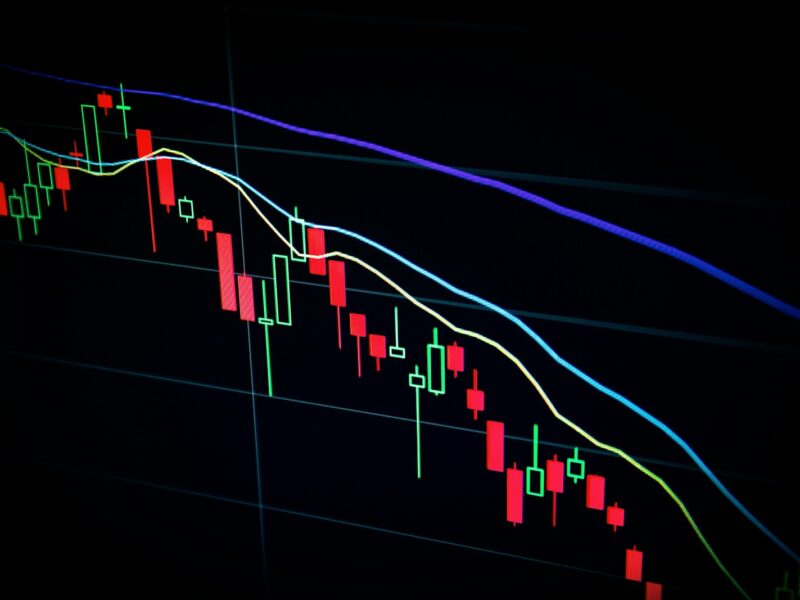The world of investing is characterized by its exhilarating highs and heart-wrenching lows. While the potential for substantial gains is alluring, the volatile nature of markets demands a strategic and informed approach to investment. One such strategy is investment analysis. This article details essential strategies for analyzing volatile markets and making successful investment decisions.
Understanding Market Volatility vs. Risk
As you start investing, understand the difference between risk and volatility in financial markets. Volatility in financial markets quantifies the speed, magnitude, and duration of an asset/investment’s price swings. The greater the asset’s volatility, the more frequent its price swings.
Market risk is the possibility of losing some (or all) of an investment. Some risks lead to potential loss while others can be recovered. For instance, if you’re a Bitcoin investor, you can gauge the market risk before converting Bitcoin to USD to avoid potential losses.
As market volatility increases, market risk also increases. Markets can respond through increased trade volumes during these periods with a corresponding decrease in the position’s holding periods. In times of extreme volatility, prices reflect hypersensitivity to news as markets overreact. This is why increased volatility usually corresponds with larger and more frequent downswings, which is a market risk to investors.
5 Strategies for Successful Investment Analysis
When trading in volatile markets, the following strategies can help you successfully invest and navigate the markets:
1. Risk Management is Paramount
Given the volatility of the financial market, such as crypto, equity, fixed, commodity, and current, effective risk management is crucial. The few risk management strategies investors can use include:
- Never invest your money more than you can afford to lose to protect yourself from emotional distress when you experience a loss.
- Consider diversifying your portfolio to spread risk across different assets.
- Set up stop-loss orders to help limit potential losses during market downturns.
These risk management strategies will cushion you in case of market downturns and losses and help you maximize your investments.
2. Portfolio Diversification
Portfolio diversification is an investment risk management strategy and an investment strategy in itself. You’ll diversify the risk of a given asset class and might gain from another. For example, during the COVID-19 pandemic, there were significant crashes in equity markets, while crypto markets and bond yields softened. If you’d invested in these three asset classes, your portfolio impact would be limited to equity allocation, and you’d gain on crypto and bonds.
However, diversification also helps you understand different markets and settle on the most profitable ones that interest you. You can sit with your financial advisor, find the markets related to industries you want to invest in, and select the appropriate ones.
3. Stay Updated to Identify Opportunities Amidst Uncertainty
Markets are influenced by many factors, including price shifts, regulatory developments, technological advancements, partnerships, and macroeconomic trends. Staying informed about relevant news and events can provide valuable insights into potential market shifts. This can help you identify opportunities amidst uncertainties and make better-informed decisions on your investments.
4. Hedging Against Market Volatility
Perhaps the key thing for many long-term investors in volatile markets is to hedge their assets against downside losses. They often do this by selling shares and setting stop-loss orders that automatically sell their assets when prices dip by particular amounts.
Financial investors can also buy protective put options to secure their investments. This can be done on single stocks or broader indices like the S&P 500 (for example, through S&P 500 ETF). A put option gives a holder the right (but not obligation) to sell the asset’s shares at a pre-set price on or before the contract’s expiry.
5. Non-Directional Investing
Many investors practice directional investing, which works best when markets move in one direction consistently (down for shorts or up for longs). Equity investors, long or short trend followers, and market timers all rely on the movements of directional investing. In times of increased volatility, markets can experience directionless or sideways movements. Repeated over time, this can trigger stop losses and erode gains earned over years in just a few days.
Non-directional investors take advantage of the various market inefficiencies and pricing discrepancies. The non-directional strategies are usually indifferent to whether market prices are falling or rising and can succeed in any market.
Endnote
Investing in volatile markets requires analytical skills, market awareness, opportunity uptake, and risk management. By embracing fundamental and technical analysis, staying informed about news and events, and managing risks, you can navigate the in-roads, ups and downs of the volatile markets with greater confidence.



